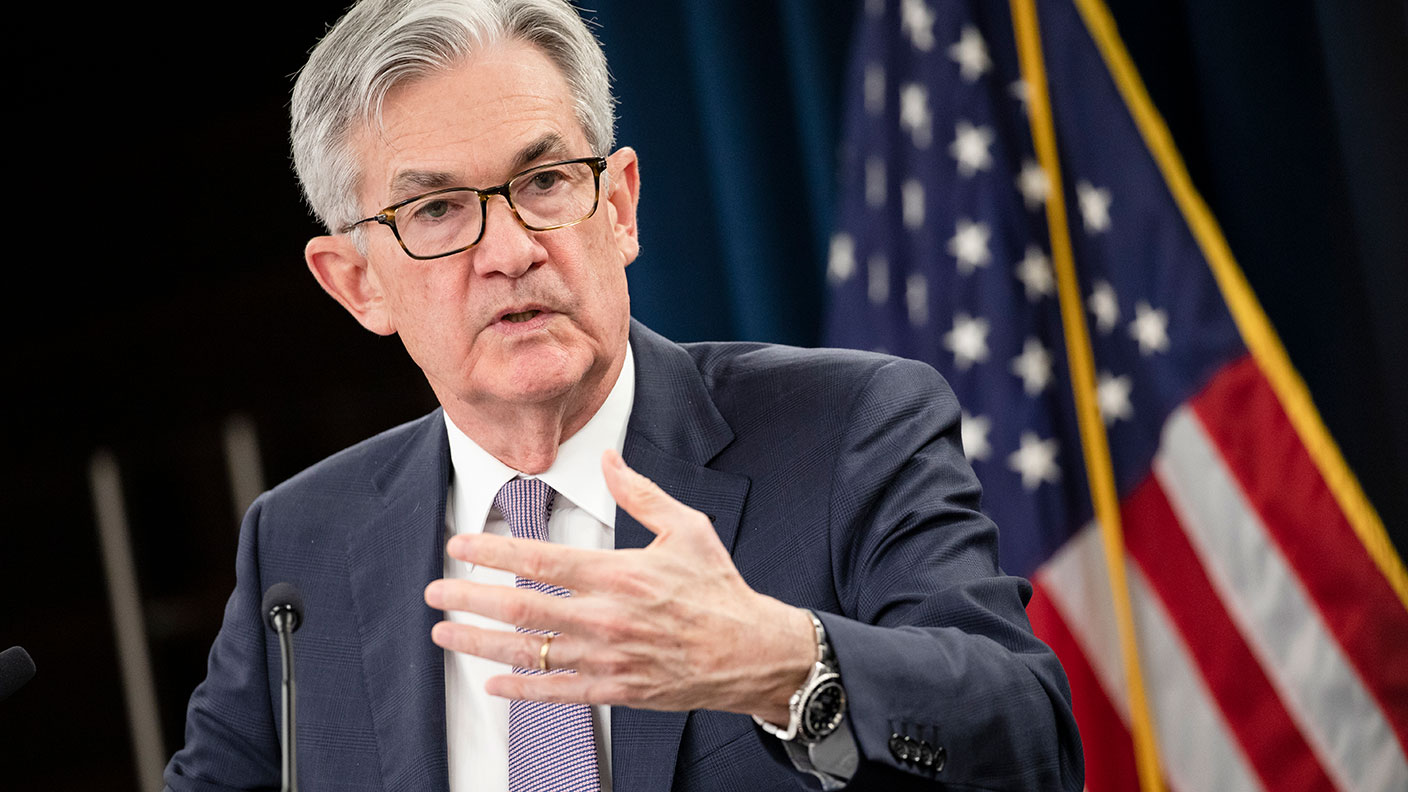Federal Reserve‘s “endless QE” cheers markets
America's Federal Reserve has slashed interest rates and launched unprecedented bond-buying programmes that stretched its mandate to its limits. More could be in store next year.

The post-election stockmarket is a “Labrador”, writes Ben Wright in The Daily Telegraph. Like the dog breed, it is proving “monomaniacally cheerful irrespective of circumstances”. Global markets had perked up in the days before the US election; polls suggested a Democratic blue wave would open the way for a $2.2trn stimulus package.
Yet when it became clear that Florida and Texas would not be painted blue, markets didn’t retreat. Instead, they decided that a Biden White House combined with a Republican Senate was what they had wanted all along. As the world waited for a final election call, the S&P 500 gained 7.3%, its best weekly performance since April.
A Biden White House with a Republican Senate is good news for US stocks, Andy LaPerriere of Cornerstone Macro told Barron’s. The Senate will block Democrat tax hikes on business, while a Biden administration should bring greater calm on the trade war front. The idea that divided government is good for equities is something of a Wall Street cliché. Yet there is little evidence for the idea that it is best when opposing parties are in Congress and the White House, says Paul Vigna in the Wall Street Journal. Since 1928 “there has been virtually no difference in the annual return of the S&P 500” between years with united and divided governments. If fact, stocks “slightly outperformed” when the executive and the legislature were in the same hands.
MoneyWeek
Subscribe to MoneyWeek today and get your first six magazine issues absolutely FREE

Sign up to Money Morning
Don't miss the latest investment and personal finances news, market analysis, plus money-saving tips with our free twice-daily newsletter
Don't miss the latest investment and personal finances news, market analysis, plus money-saving tips with our free twice-daily newsletter
The almighty Fed
British stocks managed an even more impressively Panglossian feat, notes Philip Aldrick in The Times. The FTSE 100 gained more than 6% last week despite the small matter of England returning to a nationwide lockdown. In a world where fresh quantitative easing (QE)is always available, “bad news is no longer bad news… because policymakers won’t allow it”. In 2008 the banks were “too big to fail”, now that is true of the entire market. Central bankers won’t admit it openly, but there is a “price floor for assets… Call it market welfare for financiers”. The Federal Reserve last week agreed to keep interest rates at between 0% and 0.25% and continue its monthly purchases of $120bn-worth of bonds and mortgage-backed securities with printed money. The Fed’s balance sheet has soared from $4.1trn before the pandemic began to $7.1trn today, equivalent to 34% of 2019 US GDP.
Federal Reserve chairman Jerome Powell has done more than any politician to stabilise the markets this year, says Nicholas Jasinski in Barron’s. In the spring he slashed interest rates and launched unprecedented bond-buying programmes that stretched the Fed’s mandate to its limits. More could be in store next year. For investors, it is Jerome Powell, not Joe Biden, who is the man to watch in 2021.
Get the latest financial news, insights and expert analysis from our award-winning MoneyWeek team, to help you understand what really matters when it comes to your finances.
Alex is an investment writer who has been contributing to MoneyWeek since 2015. He has been the magazine’s markets editor since 2019.
Alex has a passion for demystifying the often arcane world of finance for a general readership. While financial media tends to focus compulsively on the latest trend, the best opportunities can lie forgotten elsewhere.
He is especially interested in European equities – where his fluent French helps him to cover the continent’s largest bourse – and emerging markets, where his experience living in Beijing, and conversational Chinese, prove useful.
Hailing from Leeds, he studied Philosophy, Politics and Economics at the University of Oxford. He also holds a Master of Public Health from the University of Manchester.
-
 Who won the streaming wars?
Who won the streaming wars?The battle of the TV and film streaming giants for dominance looks to be entering a final phase. The likely winner may surprise you, says Simon Wilson
-
 'Investors should expect a good year for equities'
'Investors should expect a good year for equities'Opinion The economy is positive, and investors are still cautious, says Max King
-
 Who won the streaming wars?
Who won the streaming wars?The battle of the TV and film streaming giants for dominance looks to be entering a final phase. The likely winner may surprise you, says Simon Wilson
-
 'Investors should expect a good year for equities'
'Investors should expect a good year for equities'Opinion The economy is positive, and investors are still cautious, says Max King
-
 8 of the best properties for sale with indoor gyms
8 of the best properties for sale with indoor gymsThe best properties for sale with indoor gyms – from a four-storey mews house in London’s Knightsbridge, to a 1920s Arts & Crafts house in Melbury Abbas, Dorset
-
 Top stock ideas for 2026 that offer solidity and growth
Top stock ideas for 2026 that offer solidity and growthLast year’s stock ideas from MoneyWeek’s columnist and trader, Michael Taylor, produced another strong performance. This year’s stocks look promising too
-
 Market predictions for 2026: Will Dubai introduce an income tax?
Market predictions for 2026: Will Dubai introduce an income tax?Opinion My 2026 predictions, from a supermarket merger to Dubai introducing an income tax and Britain’s journey back to the 1970s
-
 Stock markets have a mountain to climb: opt for resilience, growth and value
Stock markets have a mountain to climb: opt for resilience, growth and valueOpinion Julian Wheeler, partner and US equity specialist, Shard Capital, highlights three US stocks where he would put his money
-
 The steady rise of stablecoins
The steady rise of stablecoinsInnovations in cryptocurrency have created stablecoins, a new form of money. Trump is an enthusiastic supporter, but its benefits are not yet clear
-
 SRT Marine Systems: A leader in marine technology
SRT Marine Systems: A leader in marine technologySRT Marine Systems is thriving and has a bulging order book, says Dr Michael Tubbs